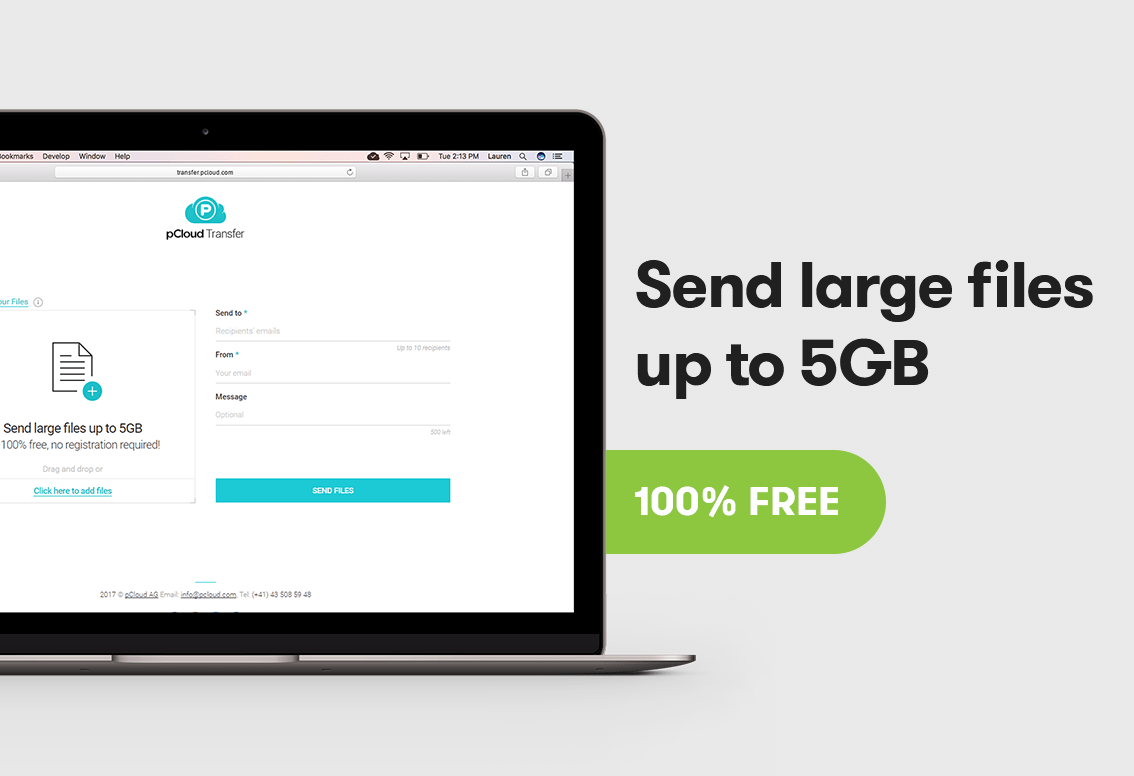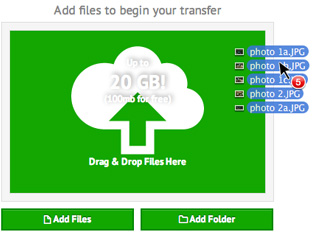You can send large files by using cloud storage services like Google Drive or Dropbox. Share the file link via email.

Sending large files via email can be challenging due to size limitations. Cloud storage services provide a practical solution. Upload your file to services like Google Drive, Dropbox, or OneDrive. After uploading, generate a shareable link. Copy this link and paste it into your email.
This method bypasses email size restrictions and ensures the recipient can easily access the file. It’s a simple, efficient, and free way to send large files. Many users find this approach convenient and reliable, especially for sharing documents, images, or videos that exceed typical email size limits.
Introduction To Email File Size Limits
Sending large files via email can be tricky. Many email services restrict file sizes. Understanding these limits can help you find solutions.
The Challenge Of Email Attachments
Email attachments often face size restrictions. This can make sending large files difficult. Most email providers limit attachment sizes to ensure smooth service.
For instance, Gmail has a 25MB limit. Yahoo Mail and Outlook also have similar restrictions. This can be frustrating when you need to send large files.
Consider these common scenarios:
- Sending high-resolution photos to friends or family.
- Sharing a large PDF document with colleagues.
- Submitting a video project to a client.
In these cases, the file size limit becomes a barrier.
Why Email Services Impose Size Limits
Email services impose size limits for several reasons. These limits ensure efficient operation and protect against potential issues.
Here are the key reasons:
- Server Load: Large files can burden email servers. This can slow down the service for all users.
- Bandwidth Usage: Sending large files consumes more bandwidth. This can increase operational costs for service providers.
- Storage Space: Large attachments take up more storage space. This can lead to increased storage costs.
- Security: Large files can pose security risks. They may contain malicious software that can harm the server.
These reasons justify the need for email file size limits. Understanding these can help you find effective alternatives.
Compressing Files Before Sending
Sending large files by email is often tricky. Email providers have size limits. Compressing files can help you send large files easily. Compressing reduces file size. This makes it easier to send files via email.
Using Zip Files To Reduce Size
ZIP files are a popular choice. They reduce file size significantly. Creating a ZIP file is simple. Right-click on the file or folder. Select “Send to” and then “Compressed (zipped) folder”. This creates a ZIP file. You can now attach this ZIP file to your email.
Selecting Files For Optimal Compression
Not all files compress equally. Some files shrink more than others. Text files and images usually compress well. Videos and already compressed files might not reduce much. Choose files that can be compressed effectively. This helps in reducing the size more.
Here are steps to select files for optimal compression:
- Identify files that can be compressed.
- Avoid files that are already compressed.
- Group similar files together.
- Right-click and choose “Compress”.
A table can help understand file types and their compression:
| File Type | Compressibility |
|---|---|
| Text Files (.txt, .doc) | High |
| Images (.jpg, .png) | Medium |
| Videos (.mp4, .mov) | Low |
| Compressed Files (.zip, .rar) | Very Low |
Using these tips, you can send large files by email. Compressing files makes it easier and faster.
Cloud Storage Solutions
Sending large files by email can be tricky. Email providers often have size limits. Using cloud storage solutions makes this easy. They allow you to share large files without hassle.
Leveraging Google Drive For Email Attachments
Google Drive is a popular choice for sharing large files. It offers 15GB of free storage. To use Google Drive for email:
- Upload your file to Google Drive.
- Open Gmail and compose a new email.
- Click the Google Drive icon at the bottom.
- Select your file and click “Insert”.
- Send your email.
Your recipient can download the file from Google Drive. This method bypasses email size limits.
Dropbox: A Link-sharing Alternative
Dropbox is another great option. It offers 2GB of free storage. To send a large file using Dropbox:
- Upload your file to Dropbox.
- Right-click the file and select “Share”.
- Click “Create a link”.
- Copy the link.
- Paste the link in your email and send it.
Recipients can use the link to download the file. Dropbox makes file sharing simple and quick.

Credit: transfer.pcloud.com
Splitting Large Files
Sending large files by email can be hard. Some email services have size limits. Splitting large files into smaller parts helps. This makes it easier to send big files.
Tools For Splitting Files
Various tools can split large files into smaller parts. Below are some useful tools:
- 7-Zip: A free tool for splitting files.
- WinRAR: Another tool that splits files easily.
- GSplit: A dedicated tool for file splitting.
| Tool | Feature |
|---|---|
| 7-Zip | Free, easy to use |
| WinRAR | Popular, has many options |
| GSplit | Specialized for splitting files |
Reassembling Pieces At The Destination
After sending the file pieces, the receiver needs to reassemble them. Here are simple steps to follow:
- Download all file parts.
- Use the same tool used for splitting.
- Select the first part and start reassembling.
Ensure all parts are in the same folder before reassembling. This makes the process smooth.
Using File Transfer Services
Sending large files by email can be a challenge. File transfer services make this easy. These tools are free and simple to use.
Understanding Wetransfer
WeTransfer is a popular file transfer service. It allows sending files up to 2GB for free. Follow these steps to use it:
- Go to the WeTransfer website.
- Click on “Add your files” and select your files.
- Enter the recipient’s email address.
- Type your email address and a message (optional).
- Click “Transfer”.
Your file will upload. The recipient gets a download link. It’s that simple!
Benefits Of Send Anywhere
Send Anywhere is another great option. It offers unlimited file size transfers. Here are the benefits:
- Unlimited file size transfers.
- Easy to use with a simple interface.
- Files are sent with a 6-digit key.
To use Send Anywhere, follow these steps:
- Visit the Send Anywhere website.
- Select the files you want to send.
- Click “Send”. You will get a 6-digit key.
- Share the key with the recipient.
- They enter the key on the website to download the files.
This method is quick and secure. Your files are transferred without hassle.

Credit: www.transferbigfiles.com
Optimizing Media Files For Email
Sending large files by email can be tricky. Email providers often have size limits. Optimizing media files is essential. This helps you send large files easily. Let’s explore how to reduce image file sizes and compress video files effectively.
Reducing Image File Sizes
Large image files can slow down emails. Reduce their size to solve this. Follow these steps:
- Resize Images: Use tools like Photoshop or GIMP. Set the dimensions smaller.
- Compress Images: Use online tools like TinyPNG. These reduce file size without losing quality.
- Convert Formats: Save images as JPEG or PNG. These formats are smaller in size.
Here is a quick comparison of common image formats:
| Format | Best For | File Size |
|---|---|---|
| JPEG | Photographs | Smaller |
| PNG | Graphics with text | Medium |
| GIF | Animations | Small |
Compressing Video Files Effectively
Video files are often very large. Compress them to send by email. Here’s how:
- Use Video Compression Software: Tools like HandBrake can help. They reduce video size without losing quality.
- Choose the Right Format: Convert videos to MP4. This format is widely supported and smaller.
- Adjust Resolution: Lower the resolution to reduce size. For example, 720p is smaller than 1080p.
Here is a comparison of video formats:
| Format | Best For | File Size |
|---|---|---|
| MP4 | General use | Smaller |
| AVI | High quality | Larger |
| MKV | High quality | Medium |
Email Clients With Higher Size Limits
Sending large files by email can be challenging. Many email services limit the size of attachments. But some email clients have higher size limits. These services make sharing big files easier.
Exploring Email Services With Generous Limits
Some email clients allow larger attachments than others. Here are a few options:
- Gmail: Gmail allows up to 25 MB per email. This includes attachments.
- Outlook: Outlook supports attachments up to 34 MB.
- Yahoo Mail: Yahoo Mail allows up to 25 MB per email.
- ProtonMail: ProtonMail has a limit of 25 MB.
These email services can handle bigger files. They can be useful for sending large documents, images, or videos.
The Pros And Cons Of Switching Email Providers
Switching email providers can be a big decision. Here are some pros and cons:
| Pros | Cons |
|---|---|
| Higher attachment limits | Learning a new interface |
| Better security features | Possible downtime during switch |
| More storage space | Transferring old emails |
Switching can offer benefits like more storage and higher limits. But it also comes with challenges. Weigh the pros and cons before making a change.

Credit: www.dropbox.com
Best Practices For Sending Large Files
Sending large files by email can be tricky. Here are some best practices to follow. These tips ensure your files reach their destination safely.
Communicating With Recipients Beforehand
Always inform the recipient before sending large files. Let them know the file size and type. This prepares them for the incoming email.
Ask if they have storage space. Check if their email service supports large files. This avoids delivery issues.
Suggest using a file sharing service. Services like Google Drive or Dropbox work well. They handle large files better than email.
Provide a brief explanation of the file content. This helps the recipient understand the file’s importance.
| Step | Action |
|---|---|
| 1 | Inform recipient about the file |
| 2 | Check their storage space |
| 3 | Suggest a file sharing service |
| 4 | Explain the file content |
Securing Files During Transfer
Security is crucial when sending large files. Use encryption tools to protect the file. Tools like 7-Zip or WinRAR work well for this purpose.
Always use a strong password. Share the password through a different channel. This could be a phone call or text message.
Consider using secure file sharing services. Services like WeTransfer or SendGB offer encryption. They add an extra layer of security.
Double-check the recipient’s email address. Ensure you are sending the file to the right person. This prevents accidental data leaks.
- Encrypt your files
- Use strong passwords
- Share passwords separately
- Use secure file sharing services
- Verify recipient’s email address
Troubleshooting Common Issues
Sending large files by email can be tricky. Sometimes, things go wrong. This section helps you solve common problems. Follow these steps for a smooth experience.
When Files Fail To Send
Files may fail to send for many reasons. Here are some common causes:
- File Size Limit: Most email providers have size limits. Check your provider’s limit.
- Slow Internet: A slow connection can cause failures. Ensure your internet is stable.
- File Format: Some formats may not be supported. Use common formats like .zip or .pdf.
To fix these issues, try the following steps:
- Compress your file. Use tools like WinRAR or 7-Zip.
- Split the file into smaller parts. You can send parts separately.
- Check your internet connection. Restart your router if needed.
Resolving Upload And Download Errors
Upload and download errors can be frustrating. These errors may occur for various reasons:
| Issue | Possible Solution |
|---|---|
| Network Timeout | Try uploading again later. Check your internet speed. |
| File Corruption | Ensure the file is not corrupted. Use a file integrity checker. |
| Server Issues | Wait a few minutes. Servers may be busy or down. |
To resolve these errors, you can:
- Use a different email provider. Gmail, Yahoo, and Outlook are good options.
- Try using a file-sharing service. Google Drive, Dropbox, and WeTransfer work well.
- Clear your browser cache. This can fix many upload/download issues.
By following these tips, you can send large files smoothly.
Frequently Asked Questions
How To Send Large Files Through Email For Free?
Use free services like Google Drive, Dropbox, or WeTransfer. Upload the file, then share the download link via email.
How Do I Send A File That Is Too Big For Email?
Use cloud storage services like Google Drive or Dropbox. Share the file link via email. Consider file compression tools. Use file transfer services like WeTransfer. Ensure the recipient has access to the shared link.
How Can I Send Files Larger Than 25mb For Free?
Use free file-sharing services like Google Drive, Dropbox, or WeTransfer. Upload files and share the download link.
How To Send A 20 Gb File For Free?
Use file-sharing services like Google Drive, WeTransfer, or Dropbox. Compress the file if needed.
Conclusion
Sending large files via email doesn’t have to be a hassle. Use free tools like Google Drive, WeTransfer, or Dropbox. These solutions ensure your files are delivered efficiently. Follow the steps we’ve shared to make the process smooth. Now, sharing large files is easier than ever before.
